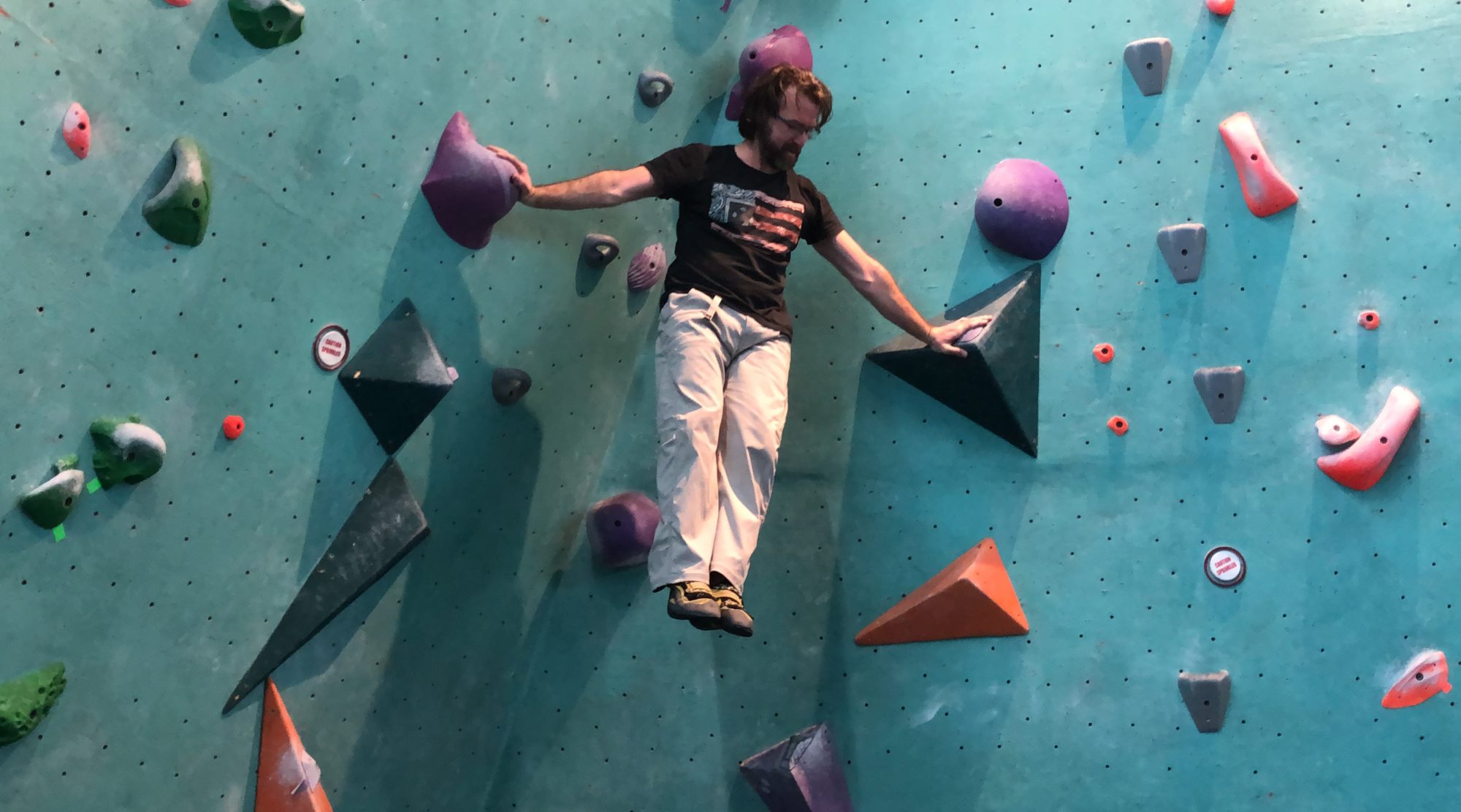New Joint Injury: Introduction & Case-study
I have a long and complex injury history (six knee surgeries, multiple concussions, whiplash injuries, and other joint injuries). Starting around the age of fifteen, physical pain was one-of-the-many daily factors of my life.
With an extensive injury history, such as mine, the addition of any significant acute injury, minor or severe, can send the nervous system into a downward pain cycle. The Pain Cycle sucks. It is no fun physically, mentally, or emotionally. So, with any injury, big or small, I set my intentions towards supporting the healing process; restoring pain-free function; a speedy return to the active and moderately-risky lifestyle that I enjoy, and to do so in a way in which I can grow functionally stronger and more resilient for the advancement of the aging process.
Recently, while climbing at Crux Climbing Center , I injured the joint of the left ankle/foot.
**This is not medical advice.**
My hope is to use this injury as a learning/teaching tool for how I integrate “the TAOFit Method” to facilitate my body’s healing response. Paying strict attention to supporting the stages of tissue healing.
Mechanism of Ankle/Foot Joint Injury:
While on the climbing wall, my right foot slipped with my left foot unloaded. As I dropped, the tip of my left shoe caught the hold. With the knee extended, full body weight loaded the left ankle into dorsiflexion. It jammed hard and deep into the anterolateral region of the ankle/foot (front/outside ankle) .
I was able to walk it off, but my ankle and foot neurology was “off”. There was also noticeable edema forming. Pics show light to moderate swelling. Once swelling takes hold in or around the joint, it affects “fluid flow,” and all kinds of systems go “offline”.
Note: the swelling moved down into the midfoot between 2 & 6 hours post injury. This had a noticeable impact on motor control of the foot and toes.
First 12 Hours
Concerns:
The Body is made of rivers and streams
With any acute injury, there are two primary therapeutic theories of “active-recovery” that I want to focus on.
- The TAOFit Method of Movement Therapy to assess and monitor the progression/regression of “Non-Painful” ROM.
- Promoting/maintaining full body “fluid flow”
[Fluid Flow – the literal and metaphorical complex transport system for cellular respiration ie “nutrients in” and “waste out”]
Over the first 12-24 hours, while the inflammatory response sets in, it can be difficult to assess the severity of a joint injury. Especially if there is no imaging and swelling (x-ray, MRI). Swelling can have a major impact on the fluid flow dynamics not only through the injured joint, and surrounding tissue, but also the rest of the body,
 Systems of Fluid Flow
Systems of Fluid Flow
- Circulatory
- Lymphatic
- Neurologic
- Movement
- and more…
Once home from the gym
I had a slight limp with mild pain upon loading of the left leg (level 3-4 on scale of 10). Noticeable moderate swelling at and below the ankle. Neurological motor control was challenged in inversion/eversion and flexion/extension of the ankle/foot/toes (especially along the lateral three rays, with neurological distortions in lateral compartment of lower leg). Basically… I jammed it “good”.
My Self Treatment Protocol:
Above is the Movement Therapy class which I wrote specific for assessing this ankle injury. Below is a brief description of what I did to facilitate the healing process i.e. my version of active rest.
- Followed the Rules of Pain (found on my website).
- Self-lymphatic massage and joint manipulation of the foot and ankle to promote lymphatic flow.
- A light foam roller session to promote fluid flow on upstream muscle/fascial tissues.
- Non-painful Movement Exploration through primal/ancestral postures (similar to above video)
- assessing the quality of both passive and active ROM
- encouraging pain-free joint mobility
- facilitating full-body fluid flow (so that swelling can be reabsorbed)
- and maintain neurological sensory/motor function.
- Rested with my foot elevated above heart level (allowing gravity to assist with fluid flow back to the heart).
- No ice – I tend to stay away from ice unless the swelling/pain is severe.




